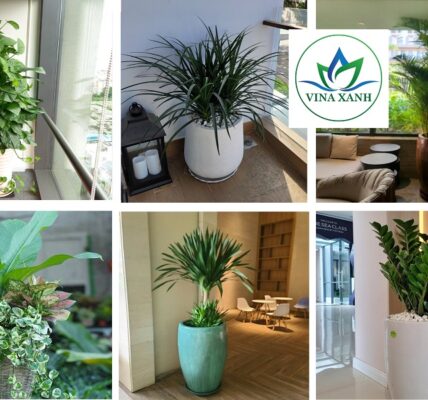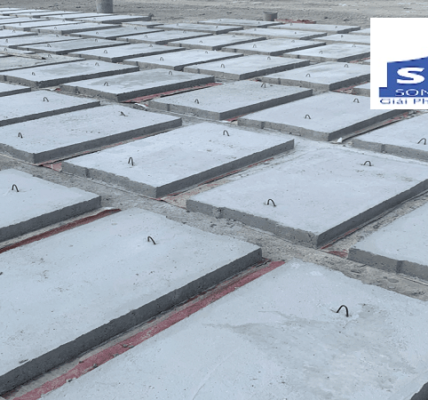Frameless glass has emerged as a significant trend in contemporary architecture and interior design. It represents a sophisticated fusion of form and function, offering a sleek, modern aesthetic that has won over designers and homeowners alike. Unlike traditional framed glass installations, page baobinhduong.top share frameless glass eliminates the need for bulky edges and supports, creating a seamless and unobstructed view. This design choice not only amplifies natural light but also provides an open and airy feel, making spaces appear larger and more connected.
Introduction to Frameless Glass: A Comprehensive Guide
The aesthetic appeal of frameless glass is undeniable. Its minimalist design aligns perfectly with modern architectural principles that prioritize clean lines, simplicity, and the seamless integration of indoor and outdoor spaces. Frameless glass installations, whether they are used for doors, windows, partitions, or shower enclosures, exude an air of sophistication and elegance that complements a wide variety of interior styles, from ultramodern to transitional.
One of the standout features of frameless glass is its versatility. It can be customized to fit a range of applications and environments, offering a flexible solution that can adapt to the specific needs of any project. Architects and designers often leverage frameless glass to achieve a sense of continuity in their designs, as it can be used in both residential and commercial settings. This adaptability makes it a preferred choice for creating spaces that are not only aesthetically pleasing but also highly functional.
Furthermore, frameless glass plays a pivotal role in enhancing the visual and spatial qualities of a room. By removing physical barriers and obstructions, it fosters an uninterrupted flow of space, which can be particularly beneficial in smaller or urban environments where maximizing space is crucial. This seamless look also facilitates a greater connection with the outside world, allowing for unobstructed views that bring the beauty of the outdoors inside.
In essence, frameless glass represents a harmonious blend of aesthetics and practicality, making it an ideal choice for contemporary architecture and interior design. Its ability to create open, light-filled spaces while maintaining a minimalist and elegant look has solidified its status as a go-to material in modern building projects.
Types of Frameless Glass
Frameless glass offers a myriad of options, each with distinct characteristics tailored to specific applications. Allowing for versatility in design, the prominent types include clear, frosted, tinted, and low-iron glass. Each variety stands out with unique benefits and functional aesthetics, suitable for varying needs.
Clear Frameless Glass: Clear glass is the most commonly used type due to its simplicity and ability to blend seamlessly into any surrounding. It is highly transparent and allows maximum light to pass through, making spaces appear larger and more inviting. This type of glass is typically found in shower screens, office partitions, and storefronts. It comes in various thicknesses, ranging from 6 mm to 19 mm, depending on the intended use, with thicker options providing higher durability and safety.
Frosted Frameless Glass: Frosted glass is characterized by its opaque texture, achieved through acid etching or sandblasting. It provides an excellent balance between privacy and light diffusion, making it ideal for bathroom enclosures, office doors, and conference rooms. The frosted finish also adds a touch of elegance to the décor. Available in standard safety glass thicknesses, frosted glass ensures compliance with safety regulations, offering both aesthetics and security.
Tinted Frameless Glass: Tinted glass incorporates various color tints, providing a degree of solar control by reducing glare and heat penetration. This type is favored for exterior applications, such as in windows and facades, where controlling sunlight while retaining a sleek appearance is essential. Tinted options are available in different shades and thicknesses, providing flexibility in customization and performance enhancement.
Low-Iron Frameless Glass: Low-iron glass, often referred to as “ultra-clear,” eliminates the greenish tint found in standard clear glass. This results in superior clarity and color neutrality, making it the preferred choice for applications requiring high transparency and minimal distortion. Commonly used in luxury installations like glass railings, GlassCurtains display cases, and high-end partitions, low-iron glass upholds stringent safety standards, ensuring robust use.
The combination of varying thicknesses, typically 6 mm to 19 mm, and adherence to safety standards such as tempered or laminated glass, ensure that each type delivers not only elegance but also reliable durability. This makes frameless glass a versatile choice for both residential and commercial applications.
Applications in Residential Spaces
Frameless glass has become an increasingly popular choice in residential design due to its sleek appearance and functional benefits. One of the most common applications of frameless glass in homes is in shower enclosures. Frameless glass showers create a clean, modern look while maximizing the sense of space in the bathroom. The absence of frames allows for uninterrupted views and makes smaller bathrooms appear larger and more open.
Another popular use of frameless glass is in doors and windows. Frameless glass doors, whether they are used as entry doors, patio doors, or interior doors, contribute to a seamless transition between spaces. These doors offer unobstructed views, enhancing the connection between indoor and outdoor environments. Similarly, frameless windows allow for maximum light penetration, creating brighter and more inviting living spaces. The expansive views provided by frameless windows can also bring a natural, calming atmosphere into the home.
Frameless glass railings are another innovative application, especially in homes with multiple levels or elevated outdoor areas such as balconies and decks. These railings provide safety without compromising the aesthetic appeal. The transparency of frameless glass railings ensures that views are not obstructed, and they help to create a sense of openness and continuity throughout the home.
Additionally, frameless glass is increasingly being used as room dividers. Unlike traditional walls, frameless glass partitions divide spaces without blocking light or breaking the visual flow. This can be particularly beneficial in open-concept homes where the objective is to maintain a spacious and airy feeling. Glass room dividers can also be customized with frosted or tinted finishes to offer privacy without sacrificing the modern look.
Incorporating frameless glass into residential design not only enhances aesthetic appeal but also offers practical benefits. By allowing more natural light to penetrate and creating the illusion of more space, frameless glass can transform the ambiance of any home. Its versatility makes it an excellent choice for various applications, providing both beauty and functionality.
Frameless glass has found a significant foothold in commercial spaces due to its modern aesthetic and functional versatility. One prominent application is in office partitions. Frameless glass office partitions are increasingly popular for their ability to create open, light-filled work environments while still providing necessary privacy. The absence of bulky frames ensures that natural light travels freely throughout the workspace, fostering an atmosphere of transparency and openness. This design choice often leads to increased employee morale and productivity.
Another crucial area where frameless glass demonstrates its value is within conference rooms. Frameless glass walls around conference rooms create a sleek, professional space that impresses clients and visitors alike. These walls offer acoustic insulation, ensuring that discussions and presentations remain confidential. Additionally, integrating frameless glass panels with smart technology, such as switchable privacy glass, can cater to the varying needs of modern business meetings, enhancing both privacy and the overall user experience.
In retail environments, frameless glass storefronts play a pivotal role in crafting an inviting and upscale image. The clear, barrier-free design creates unobstructed views of store interiors, enticing potential customers with a glimpse of the products and ambiance inside. Frameless glass also enhances natural light, making retail spaces appear larger, brighter, and more welcoming. The minimalist aesthetic aligns well with contemporary design trends, contributing to a sophisticated shopping experience that can drive customer engagement and sales.
Display cases in commercial settings, particularly in high-end retail stores and museums, Glass Curtain also benefit greatly from the use of frameless glass. The seamless design of the glass ensures that the focus remains on the items inside, providing an undistorted view and enhancing the visual appeal. This not only preserves the integrity of showcased items but also adds a touch of elegance to the overall display, thus elevating the perception of quality and exclusivity.
Overall, the application of frameless glass in commercial spaces helps create environments that are not only visually appealing but also functionally superior. By leveraging the modern, professional, and inviting qualities of frameless glass, businesses can enhance both their operational efficiency and their brand image.
Installation and Maintenance
Installing frameless glass requires meticulous attention to detail and a series of specialized tools. The installation process generally begins with precise measurements to ensure a perfect fit. Essential tools include a spirit level for alignment, spacers for maintaining even gaps, and suction cups for safe handling. Silicone sealant and quality hardware, such as hinges and brackets, are also pivotal in securing the glass panels properly.
Techniques for installing frameless glass involve several steps. Initially, the area must be thoroughly cleaned and prepped to avoid any impurities interfering with the attachment process. The glass panels are then carefully positioned and affixed using either fasteners or a silicone sealant to ensure stability. It’s worth noting that any misalignment during these stages can compromise both aesthetic appeal and structural integrity.
While some DIY enthusiasts might be tempted to undertake the installation themselves, seeking professional help is highly advisable. Professional installers possess not only the technical expertise but also the necessary experience to navigate potential challenges effectively. These challenges might include dealing with uneven surfaces, ensuring watertight seals, or adjusting for structural irregularities. Professional installation guarantees both the safety and durability of the installation, reducing the likelihood of any future issues.
Maintaining frameless glass to keep it looking pristine revolves around regular and effective cleaning methods. A non-abrasive glass cleaner is recommended to avoid scratching the surface, while a squeegee can be employed for streak-free results. For tougher stains or buildup, a mixture of water and vinegar can be effective. Additionally, protective treatments like hydrophobic coatings can help repel water and reduce mineral deposits, maintaining the glass’s sparkling clarity.
Read more: Glass Curtains SEA good choice
By adhering to proper installation techniques and maintenance practices, frameless glass can retain its elegance and appeal for many years. Regular attention and care will ensure that this sophisticated design element continues to enhance any space with its modern and versatile aesthetic.





